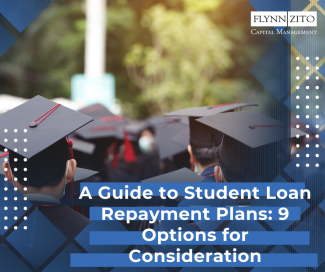
A Guide to Student Loan Repayment Plans: 9 Options for Consideration
In a 6 to 3 vote, the Supreme Court struck down the Biden administration’s student loan forgiveness plan denying a chance for at least 43 million eligible participants to eliminate up to $20,000 of their debt.
Despite new actions announced by the White House in a continued fight to provide debt relief and support to as many student loan borrowers as possible, borrowers still must stay vigilant should they find themselves with debt to be repaid.
When calculating a repayment plan, the government uses discretionary income, the difference between your annual income and the money left over after you pay for essential goods and services like housing, food, and taxes.
Here are nine tuition repayment strategies that you may find beneficial.
- Standard repayment plan
Time Frame
A standard repayment plan involves you making equal monthly payments over 10 years (within 10 to 30 years for Consolidation Loans).
Borrower Eligibility
All borrowers are eligible for this repayment plan.
Eligible Loans
The loans eligible for this plan include the following:
- Direct Subsidized and Unsubsidized Loans
- Subsidized and Unsubsidized Federal Stafford Loans
- All PLUS loans
- All Consolidation Loans (Direct or FFEL)
- Extended repayment plan
Time Frame
A fixed or graduated repayment plan gets paid back in up to 25 years.
Borrower Eligibility
All borrowers are eligible; however, Federal Family Education Loan (FFEL) and federal direct loan borrowers must owe more than $30,000.
Eligible Loans
The loans eligible for this plan include the following:
- Direct Subsidized and Unsubsidized Loans
- Subsidized and Unsubsidized Federal Stafford Loans
- All PLUS loans
- All Consolidation Loans (Direct or FFEL)
- Graduated repayment plan
Time Frame
This repayment plan does not consist of equal monthly payments. They start at one amount and then increase over time until the loan is paid off.
Borrower Eligibility
All borrowers are eligible for this repayment plan.
Eligible Loans
The loans eligible for this plan include the following:
- Direct Subsidized and Unsubsidized Loans
- Subsidized and Unsubsidized Federal Stafford Loans
- All PLUS loans
- All Consolidation Loans (Direct or FFEL)
- Pay as you earn repayment plan (PAYE)
Time Frame
PAYE takes monthly payments at 10% of discretionary income but never exceeds what you would pay on a Standard Repayment Plan.
Borrower Eligibility
Eligible participants must be a new borrower on or after Oct. 1, 2007, and must have received a disbursement of a direct loan on or after Oct. 1, 2011
Eligible Loans
The loans eligible for this plan include the following:
- Direct Subsidized and Unsubsidized Loans
- Direct PLUS Loans made to students
- Direct Consolidation Loans that do not include PLUS loans (Direct or FFEL) made to parents
- Revised pay-as-you-earn repayment plan (REPAYE)
Time Frame
This repayment plan involves monthly payments calculated by dividing 10% of your discretionary income by 12 months.
If you are married, your and your spouse’s income and loan debt will be considered, regardless of whether taxes are filed separately or jointly (with certain exceptions).
Eligible participants include any Direct Loan borrower with a qualified loan.
The loans eligible for this plan include the following:
- Direct Subsidized and Unsubsidized Loans
- Direct PLUS Loans made to students
- Direct Consolidation Loans that do not include PLUS loans (Direct or FFEL) made to parents
- Income-Sensitive Repayment Plan
Time Frame
This repayment plan is based on annual income and paid over 15 years.
Borrower Eligibility
Eligible participants include Federal Family Education Loan borrowers.
Eligible Loans
The eligible loans include the following:
- Subsidized and Unsubsidized Federal Stafford Loans
- FFEL PLUS Loans
- FFEL Consolidation Loans
- Income-based repayment plan (IBR)
Time Frame
Repayment plans are set up based on monthly payments determined by calculating 10% or 15% of discretionary income based on when you borrowed. However, never more than you’d pay on a 10-year Standard Repayment Plan.
If you are married, your spouse’s income or loan debt will only be considered if you file a joint tax return.
After 20 or 25 years of payments, you may be eligible for Public Service Loan Forgiveness. You may have to pay income tax on any amount that is forgiven.
To be eligible, you must have a high debt relative to your income.
The loans eligible for this plan include the following:
- Direct Subsidized and Unsubsidized Loans
- Subsidized and Unsubsidized Federal Stafford Loans
- All PLUS loans made to students
- Consolidation Loans (Direct or FFEL) that do not include PLUS loans (Direct or FFEL) made to parents
- Income-contingent repayment plan (ICR)
Time Frame
This repayment plan involves monthly payments that are the lesser of 20% of discretionary income or the amount you’d pay over 12 years with a fixed payment based on your income.
Borrower Eligibility
If married, your loan debt or spouse’s income will be considered only if you file a joint tax return or you choose to repay your Direct Loans jointly with your spouse. Any outstanding balance will be forgiven if you haven’t repaid your loan in full after 25 years.
Eligible Loans
Eligible participants include any Direct Loan borrower with an eligible loan.
The loans eligible for this plan include the following:
- Direct Subsidized and Unsubsidized Loans
- Direct PLUS Loans made to students
- Direct Consolidation Loans
- Income-driven repayment (IDR)
Time Frame
This plan extends your loan term to 20 or 25 years, depending on the debt you hold.
Borrower Eligibility
All IDRs have similar features; however, each has slightly different rules. IBR (mentioned above) is an income-driven repayment plan for federal student loans.
Eligible Loans
Only federal student loans can be repaid under the income-driven plan. Private student loans are not eligible.
Eligibility for ICR, PAYE, REPAY, and IBR repayment plans is not guaranteed from year to year. Whether you are eligible and how much you pay get recalculated based on your family size and household income annually.
Choosing a Repayment Option that Works for You
Looking to pay less interest?
- Standard repayment. If you can afford this plan, you can pay less in interest and pay down your loan faster than you would on other repayment plans.
Looking for lower monthly payments and student loan forgiveness?
- Income-driven repayment. Payments can be as small as $0 if you are underemployed or unemployed, and the repayment amount changes annually. At the end of the term, you get IDR student loan forgiveness on your remaining debt. However, you may pay taxes on the forgiven amount.
Do you have a high income but want lower initial payments?
- Graduated repayment plan. This is a good option because graduated repayment lowers your payments at first, even as little as the interest amount on your loan. Payments then increase every two years until you finish your repayment schedule over 10 years.
Don’t want payments connected with your income?
- Extended repayment plan. This plan lowers payments by stretching them out to over 25 years. Remember, you must owe more than $30,000 in federal student loans to be eligible.
Want to pay off your loans faster?
- You can prepay your loans through any repayment plan; however, the Standard Repayment Plan is most beneficial. This is a great way to save money on interest. Remember to inform your loan servicer to apply the extra payment to your principal rather than toward your next monthly payment.
Need to pause payments temporarily?
- Income-driven repayment. Some loans accrue interest during deferment, and all accrue interest during forbearance periods. This increases the debt you owe. Income repayment plans can help reduce payments sometimes to $0, and those payments count toward forgiveness.
Public Service Loan Forgiveness Repayment Options
- Income-driven repayment. A federal program is available to government employees, public school teachers, and specific nonprofit employees. Those eligible can have their loan balance forgiven tax-free after making 120 qualifying loan payments.
Private Student Loan Options
- Private student loans don’t qualify for income-driven repayment; however, some lenders provide options that may temporarily reduce payments. If you struggle to repay a private loan, you should contact your lender to discuss any options.
Consulting a financial professional can help you determine how repayments may impact your financial situation and long-term goals. It only takes a few minutes to schedule an appointment and the benefits can last a lifetime.
Important Disclosures
Content in this material is for educational and general information only and not intended to provide specific advice or recommendations for any individual.
This information is not intended to be a substitute for specific individualized tax or legal advice. We suggest that you discuss your specific situation with a qualified tax or legal advisor.
All information is believed to be from reliable sources; however, LPL Financial makes no representation as to its completeness or accuracy.
This article was prepared by LPL Marketing Solutions
Sources:
Discretionary Income Definition (investopedia.com)
Repayment Plans | Federal Student Aid
Supreme Court strikes down Biden's student loan forgiveness plan (cnbc.com)
Student Loan Repayment Options: Find the Best Plan - NerdWallet
Income-Driven Repayment Plans | Federal Student Aid
LPL Tracking # 1-05374750




